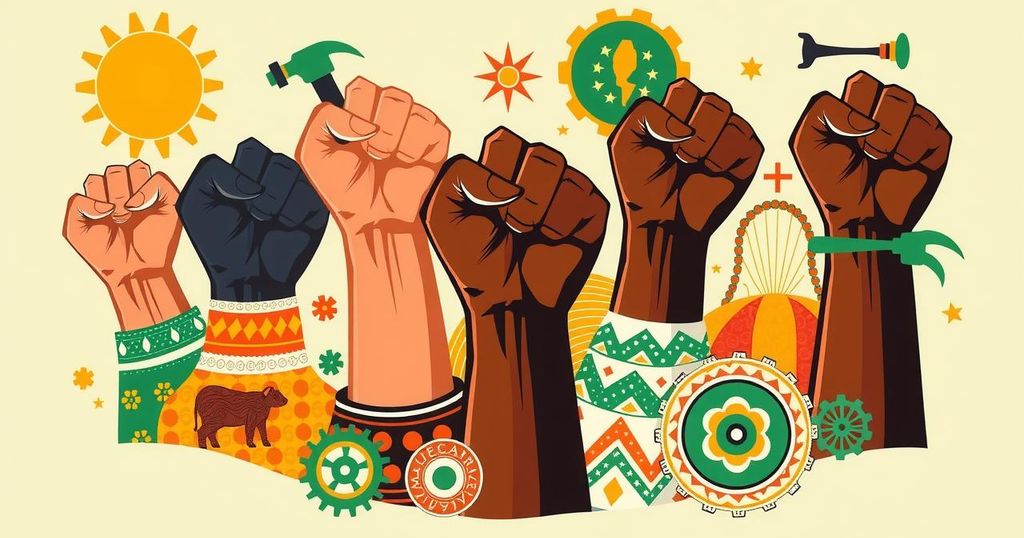The RutoMustGo resistance, led by GenZ in Kenya, has raised awareness against the government, but lacks the foundation for sustained action. The movement’s limitations center on its short-lived nature and absence of clear ideological direction. Historical movements provide lessons on the importance of unity and ideological clarity, which are crucial for mobilizing workers and peasants. A larger and potent force of silent resistance exists, deserving attention as it could lead to significant change or further chaos.
In Kenya, the RutoMustGo resistance, predominantly led by GenZ, has garnered much attention, representing a visible form of protest against the current government. Nonetheless, such movements are often fleeting and lack the necessary foundation for long-term engagement. While this resistance has undoubtedly influenced the political landscape, it should not be misinterpreted as the ultimate solution to combatting the entrenched comprador government. The resistance must be organized as part of a sustained movement rather than viewing the potential removal of President Ruto as imminent.
The limitations of the resistance have been evident, particularly in its inability to maintain momentum. Analyzing the dynamics between the current government and its opponents is crucial. President Ruto possesses significant political power encompassing legislative influence, control of law enforcement and the media, as well as financial supremacy—factors that are challenging to counter. Moreover, the resistance lacks robust labor support and peasant organization, heightening the risk of isolation and repression from the regime, which can outlast the movements under pressure.
A significant flaw in the current resistance is the absence of a well-defined ideological framework. Historical movements in Kenya, like the Mau Mau, articulated clear goals which galvanized grassroots support. In contrast, the present efforts lack such clarity, weakening the potential for broader worker and peasant solidarity. Establishing unity and a coherent vision is vital for the resistance to effectively challenge the comprador government.
Despite the absence of a visible working-class movement leading the charge against capitalism and imperialism, it is critical to recognize that resistance exists among workers and peasants. However, the ruling elite has obscured these struggles, frequently overshadowing class-based analyses by concentrating on immediate protests rather than underlying power dynamics. Therefore, it is essential to enhance class consciousness and document the ongoing struggles, which, although underreported, remain highly relevant. The ruling government is cognizant of the implications of this silent class struggle and actively seeks to marginalize individual activists.
Social media has reported burgeoning protests in locales like Marengo and Pumwani, where unrest arose following police violence. These instances illustrate the people’s defiance in light of constitutional violations and the absence of lawful opposition. Workers and peasants find themselves compelled to engage in resistance as their rights are disregarded. While the ruling class may dismiss these dissenting actions, it will be the working populace that ultimately bears the consequences of divine imperialistic interests.
Amidst the focus on GenZ and the RutoMustGo movement, a deeper and more potent force of resistance exists in Kenya. Once fully mobilized, this force possesses the potential to challenge the status quo either through a liberating revolution against capitalism and imperialism or through further chaos, contingent upon the actions of imperialism itself.
In summary, the RutoMustGo resistance highlights the struggle of GenZ and marginalized communities in Kenya against a powerful comprador government. Despite the initial fervor, the movement’s longevity is uncertain without a clear ideological framework and support from organized labor. The underlying social and economic struggles indicate a more extensive resistance that remains hidden yet significant. As conditions evolve, understanding and documenting these dynamics is essential for fostering a cohesive and enduring challenge against prevailing injustices.
Original Source: countercurrents.org




